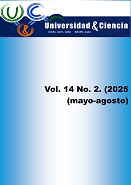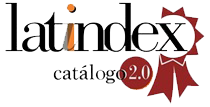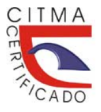Productive indicators of broiler chickens when including Chayote (Sechium edule) in the ration
DOI:
https://doi.org/10.5281/zenodo.16816439Keywords:
antioxidant, chayote, feed conversion, weight gainAbstract
Introduction: Chayote has antioxidant properties and high percentages of minerals that make it a growth promotor and inmunomodulator and immunomodulator. Objective: Determine the chemical composition of chayote, as well as evaluate different productive indicators, and the cost-benefit ration of including different percentages of this plant in the ration of broiler chickens. Method: A deductive approach was used in the study, analyzing four groups of broiler chickens, each consisting of 24 birds. Four treatments were provided with different portions of chayote (grams): Control Treatment (T0, without chayote); Treatment 1 (T1, with 50g); Treatment 2 (T2, with 100g); Treatment 3 (T3, with 150g). Four replicates were performed per treatment with six experimental units. The results obtained from the chayote were analyzed using descriptive statistics. In this study A Completely Randomized Design (CRD) was used. Results: Chayote showed high mineral content, with potassium (K) at 151.04 mg, magnesium (Mg) at 11.03 mg, phosphorus (P) at 7.91 mg, and calcium (Ca) at 7.91 mg. The highest weight gain achieved per bird at week 5 was T3 (15 %) with 802g.The highest average feed consumption per bird at week 8 was T3 (15 %) with 1785 g. The lowest Feed Conversion Rate (FCR) at week 5 was T1 (5 %) at 1.20. Conclusion: The inclusion of chayote in the diet showed an increase in productive indicators, with low feed costs, mainly due to the addition of 15 %.
Downloads
References
Association of Official Analytical Chemists (AOAC). (2016). Official methods of analysis of AOAC International. 20th ed., Rockville, MD, USA. 770-771.
Botello León, A., Martínez Aguilar, Y., Cotera Bone, M., Morán Montaño, Ch., Ortega Ojeda, M., Pérez Corría, Kirenia y Waititu, S. (2020). Growth performance, carcass traits and economic response of broiler fed of palm kernel meal (Elaeis guineensis). Cuban Journal of Agricultural Science, 54(4), 569-580.
Cadena, J., Ramírez, M., Iñiguez, Maria y Cadena, A. (2024). Agrobioprodiversity and food security: challenges and sustainable solutions. Revista Agro Productividad, 17(10), 1-13.
Castro Rodríguez, J., Toledo Díaz, A., Rodríguez Galdón, B., Perdomo Molina, A., Rodríguez Rodríguez, E. y Díaz Romero C. (2015). Morphological and chemical composition charaterization of chayotas (Sechium edule) grown in the Canary Islands (Spain). Arch. Latinoam. Nutr., 65(4), 243-253.
Córdova Terán, H., Criollo Almeida, E., Álava Cobeña, J., Velasco Espinoza, L. y Zambrano Moreira, R. (2024). Rev. Inv. Vet. Perú, 35(6),1-12. https://doi.org/10.15381/rivep.v35i6.27594
Díaz, de Cerio, E., Verardo, V., Fernández, A. y Gómez, A. (2019). New insight into phenolic composition of Chayote (Sechium edule (Jacq.) Sw). Food chem., 295, 514-519. https://doi.org/10.1016/j.foodchem.2019.05.146
Joshi, B., Shrestha, S., Adhikri, B. y Bhattarai, M. (2020). Tradional practies and genetic diversity on Chayote landraces and their conservation. Sustain. Dev., 10, 272-288. https://doi.org/10.31924/nrsd.v10i2.060
Fonseca Hernández, F. S. y Roa Vega, M. L. (2022). Inclusión de harina de cayeno (Hibiscus rosa-sinensis), cajeto (Trichanthera gigantea) y probiótico (Saccharomyces cerevisiae), sobre los parámetros productivos y digestibilidad en pollos de engorde. Revista Sistemas de Producción Agroecológicos, 13(1), 15-46. https://doi.org/10.22579/22484817.883
González Martínez, Naomi y Correa Martínez, J. (2020). Estrategias para la dinamización de la economía sostenible en el sector avícola del cantón Balsas provincia de El Oro. Revista Científica Agroecosistemas, 8(1): 23-28.
González Vázquez, A., Ponce Figueroa, L., Alcivar Cobeña, J., Valverde Lucio Y. y Gabriel Ortega, J. (2020). Suplementación alimenticia con promotores de crecimiento en pollos de engorde Cobb 500. J. Selva Andina Anim. Sci., 7(1), 3-16.
Ordoñez Rumiche, E.M., Carpio Ramos, P.A. del y Cayo Colca, I.S. (2018). Suplementación alimenticia con orégano (Origanum vulgare) y complejo enzimático en pollos de carne: I. Indicadores Productivos. UCV Hacer, 7, 29-41.
Peng, Q.Y., Li, J.D., Li, Z., Duan, Z.Y. y Wu, Y.P. (2016). Effects of dietary supplementation with oregano essential oil on growth performance, carcass traits and jejunal morphology in broiler chickens. Anim Feed Sci Technol., 214, 148-153. https://doi.org/10.1016/j.anifeedsci.-2016.02.010
Ravichandran, S. y Torrealba Rojas, H. (2023). Efecto de un promotor de crecimiento botánico sobre desempeño productivo, función intestinal y calidad de la canal de pollos de engorde. Revistas Recursos Naturales Producción y Sostenibilidad, 2(1), 18-27
Rodríguez, B., Savón, L., Vázquez, Y., Ruíz, T.E. y Herrera, M. (2018). Evaluación de la harina de forraje de Tithonia diversifolia para la alimentación de gallinas ponedoras. Livestock Research for Rural Development, 30(3) http://www.Irrd.org/Irr30/3/brod30056.html
Sugiharto, S., Yudiarti, T., Isroli, I., Widiastuti, E., Wahyuni, H.I. y Sartono, T.A. (2019). Recent advances in the incorporation of leaf meals in broiler diets. Livestock research for Rural Development, 3(7), https://www.lrrd.org/lrrd31/7/sgu_u31109.html
Downloads
Published
How to Cite
Issue
Section
License
Copyright (c) 2025 Universidad & ciencia

This work is licensed under a Creative Commons Attribution-NonCommercial-ShareAlike 4.0 International License.





















